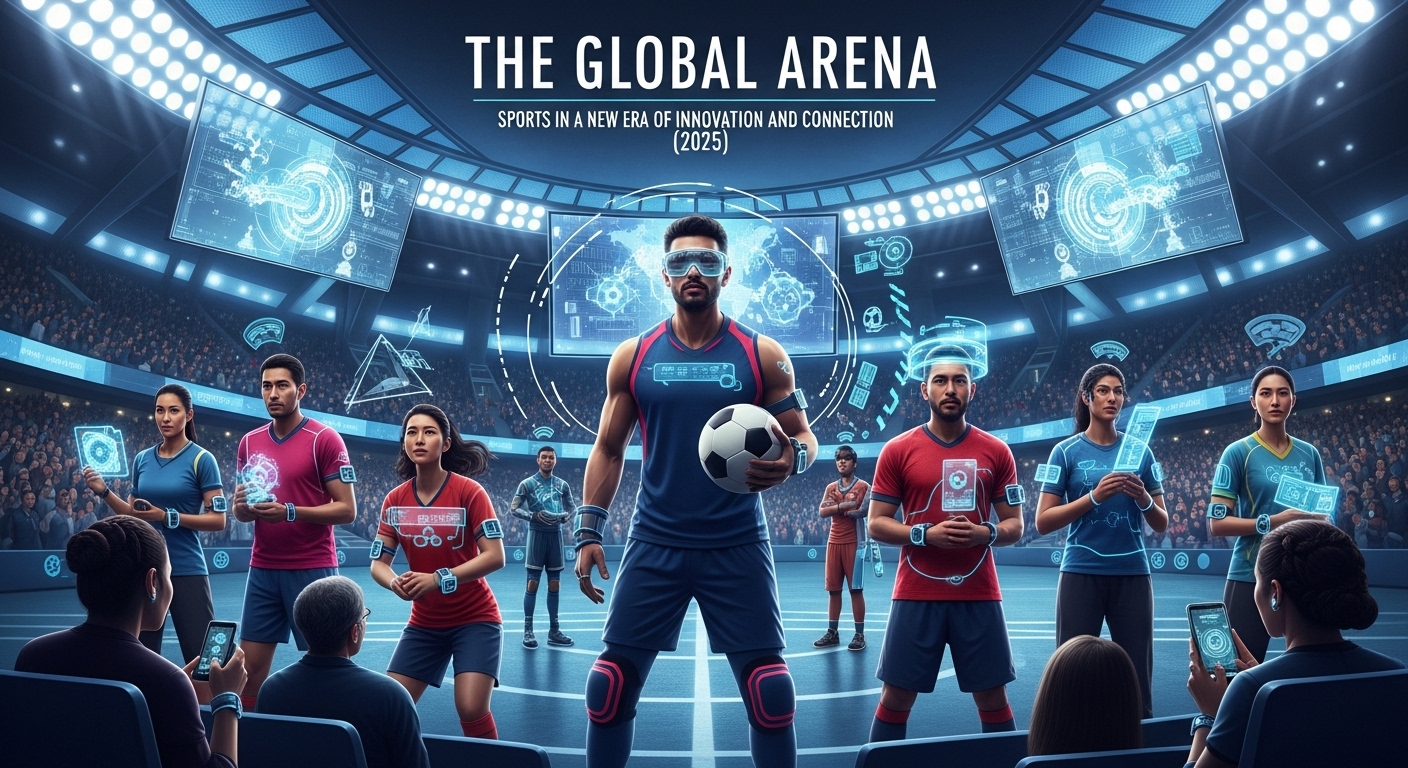The roar of the crowd, the perfectly executed play, the sheer joy of victory – “sports” are far more than just games. They are a fundamental part of human culture, embodying fierce competition, fostering vibrant communities, driving massive economic activity, and inspiring individuals across every demographic worldwide. As of mid-2025, the global sports landscape is more dynamic and technologically integrated than ever, continually reshaping how we play, watch, and connect.
The Multifaceted Nature of Sports
At its heart, sport involves physical exertion, skill, and competition, usually governed by a set of rules. However, its impact stretches far beyond the playing field:
- Physical Well-being: Sports are a cornerstone of health, promoting cardiovascular fitness, muscular strength and endurance, flexibility, and maintaining a healthy body weight. Regular participation is a powerful tool against chronic diseases and contributes to overall longevity. Studies in 2025 continue to highlight how physical activity, especially organized sports, significantly reduces the risk of mental health problems like depression and anxiety across age groups.
- Mental Fortitude: Beyond physical benefits, sports build mental resilience. They teach discipline, focus, strategic thinking, stress management, and the ability to perform under pressure. The joy of victory and the lessons learned from defeat are crucial for character development.
- Social Cohesion: Sports have an unparalleled ability to unite people. Whether as participants in a team, spectators cheering for a common cause, or communities celebrating national triumphs, sports break down barriers of age, gender, social status, and ethnicity. They foster a powerful sense of belonging and shared identity.
- Economic Engine: The global sports market is robust, projected to reach over $507 billion in 2025, growing at a compound annual growth rate (CAGR) of 6.3%. The rapidly growing sports technology market alone is expected to be valued at $21.51 billion in 2025, with a projected growth to $117.93 billion by 2034. This vast ecosystem encompasses professional leagues, broadcasting rights, merchandise, sponsorships, sports tourism, infrastructure development (like smart stadiums), and the manufacturing of sporting goods.
- Inspiration and Role Models: Athletes often become role models, inspiring millions with their dedication, perseverance, and achievements. Their stories of overcoming challenges motivate individuals to strive for excellence in their own lives.
Key Trends Shaping the Future of Sports in 2025
The world of sports is dynamic, constantly adapting to technological advancements and societal shifts:
- Technological Integration and Performance Optimization:
- AI Revolutionizes Performance: Artificial Intelligence (AI) is fundamentally transforming sports training and performance analysis. Wearable sensors and smart cameras meticulously track every nuance of an athlete’s movement – from a sprinter’s stride angle to the force of a basketball player’s jump shot. This constant stream of data is fed into advanced AI algorithms, providing real-time feedback on an athlete’s form, stamina, and in-game decision-making. AI is also invaluable in injury prevention and recovery, proactively identifying risks and speeding up rehabilitation. The sports coaching market is projected to grow by $4.77 billion from 2025 to 2029, largely driven by AI-powered platforms.
- Smart Stadiums and Venues: Leading the sports technology market, smart stadiums (accounting for 41.2% market share in 2025) integrate cutting-edge innovations to enhance fan engagement and operational management. AI is leveraged to optimize energy use, regulate climate, and forecast maintenance needs, reducing emissions and operational waste.
- Advanced Equipment: Wearable devices like Catapult’s Vector Core provide cost-effective solutions for data management and analysis, while innovations in smart clothing and smart shoes enhance athlete performance.
- Evolving Fan Engagement and Personalized Experiences:
- Immersive Viewing: Augmented Reality (AR) and Virtual Reality (VR) are significantly enhancing fan experiences. AR overlays on broadcasts provide real-time statistics and dynamic visuals. VR offers virtual stadium tours, 360-degree environments, and alternate broadcasts, allowing fans to watch matches from various angles. The phygital sports market, merging physical activity with immersive digital environments, is projected to grow from $1.54 billion in 2024 to $13.5 billion by 2034.
- AI-Powered Personalization: AI is a cornerstone of fan engagement, delivering tailored content, personalized highlight reels, real-time statistics, and predictive insights directly to viewers’ devices. Generative AI technology lends a hand in personalizing content feeds and delivering targeted advertising.
- Direct-to-Fan Models: Leagues and teams are building multi-platform ecosystems, using messaging tools and team-specific apps to create real-time dialogues with fans, fostering emotional loyalty and new revenue streams. Fan data drives monetization, offering personalized experiences, merchandising, and social engagement zones.
- Growth of Women’s Sports: This is a major success story in 2025. Global revenues in women’s elite sports are expected to surpass $2.3 billion in 2025, with commercial revenue being the largest share. Women’s basketball (projected at $1.03 billion) and soccer (projected at $820 million) are the top revenue generators. The 2025 Women’s Rugby World Cup is expected to break attendance records. This surge is driven by captivating athletic performances, substantial financial investments, amplified media coverage, and the rise of iconic female athletes who command significant public attention and influence.
- Sustainability as a Core Pillar: Sustainability in sports has transitioned from a niche concern to a central pillar of modern athletic culture. Sports venues are undergoing eco-conscious transformations, integrating renewable and recycled materials (like recycled rubber athletic flooring) and optimizing energy use with AI. Initiatives like the European Commission’s GAMES Project (Green Approaches in Management for Enhancing Sports) are exploring how sports can improve and promote environmental sustainability practices at their events. Digital tools like the UEFA Carbon Footprint Calculator help clubs and fans measure emissions.
- Esports’ Continued Ascent: Competitive video gaming (Esports) continues its rapid growth, expected to reach a global audience of over 640 million in 2025, with dedicated fans numbering around 318 million. The global esports market value is projected at $2.89 billion in 2025. Asia-Pacific leads with over 57% of viewers. Esports marketing revenue is set to pass $1 billion in 2025, with major brands increasing their sponsorships. The rise of mobile esports titles like Mobile Legends: Bang Bang further expands the audience reach.
- Sports Tourism and Active Travel: “Sports-tripping” and “mara-cations” (marathon vacations) are gaining pace in 2025. There’s a growing demand for immersive, active, and socially-conscious experiences, combining sport with sustainability, local culture, and wellness. Travelers are setting personal goals, training abroad, and seeking experiences that align with healthier lifestyles, with football tournaments, cycling races, and marathons leading the list of favorite events.
The Unifying Power
Sports, in all their forms, are a powerful force for good. They teach invaluable life lessons, promote healthy living, provide escape and entertainment, and most profoundly, they connect us. Whether it’s the shared anticipation before a major championship, the collective cheer of a victory, or the communal commiseration in defeat, sports foster a unique sense of belonging. The love for sports remains a vibrant testament to humanity’s competitive spirit and its profound need for connection and shared experience.

